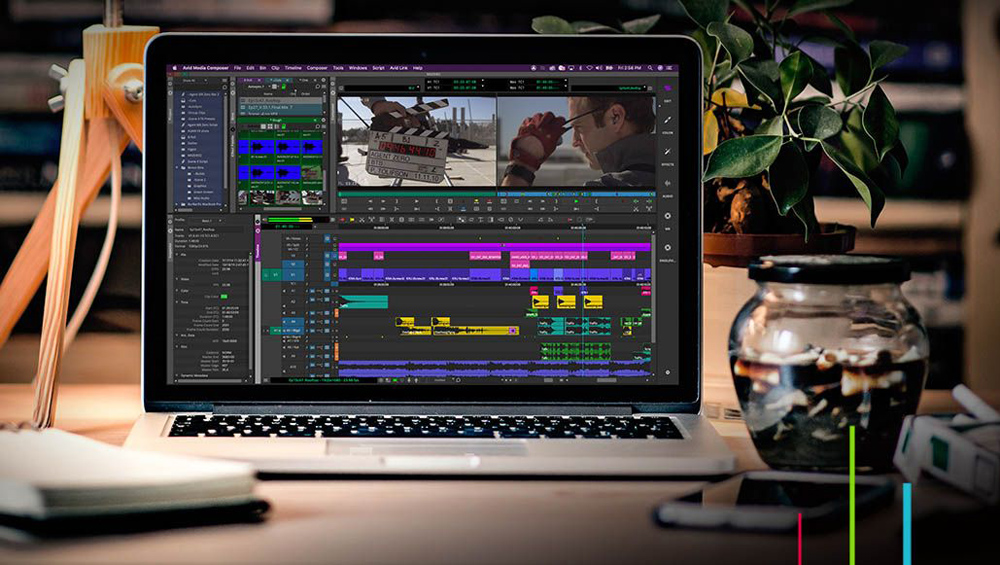
Broadcasters Refine Remote Workflows

Four months after scrambling to set up remote production workflows in the wake of COVID-19 lockdowns, broadcast news operations have refined their work-from-home game by leveraging IP communications technologies to the fullest and employing sophisticated social distancing protocols for field crews. And they are now looking long term, as the nation continues to fight the pandemic with a vaccine still months, if not a year, away.

Keith Barbaria
“We’ll continue this as long as we have to,” said Keith Barbaria, VP technology for NBC-owned WBTS Boston, NBC Sports Boston, Telemundo Boston and New England Cable News. “We’ve built it and got it to a scale where we can manage this for the long haul. We don’t want that, obviously. But I do think we’re going to find that these new solutions are applicable not just for dealing with COVID, but to manage the challenges and problems that we have as broadcasters anyway.”
Barbaria, who joined other technology executives last week for the TVNewsCheck webinar “The At-Home Studio & the Future of News Workflow,” oversaw the launch of NBC Universal’s massive new Boston headquarters in January, only to see most staffers abandon it in early March. Since then, only around 10% of NBC Boston personnel come to the station every day. Barbaria noted most staffers have now been working from home for longer than they were in the new all-IP facility.
NBC Boston’s field teams are still 100% remote and camera operators return only to a limited part of the building to swap out gear or perform maintenance. They are paired with a reporter, and those pairings stay the same, while there is a work-from-home rotation in place for other teams in the building including producers, broadcast engineers, IT and production staff. Camera operators and reporters drive to locations in separate vehicles, with a car following a live truck.
Similar field-crew protocols are in place for Spectrum Networks’ operations in New York City and upstate New York, and the percentage of on-site personnel is also around 10%. That has stayed consistent since mid-March, according to Brendan Falco, senior director of operations for spectrum networks, who said that Spectrum’s master control and media management and ingest functions have been fully remote since then.

Brendan Falco
“Our production functions are greatly pared down in terms of the number of control rooms running in both locations, and our talent has been almost completely remote since mid-March, along with our field operations,” Falco said.
Barbaria and Falco both said that they have been able to rely mostly on home broadband connections to work with on-air talent as well as producers and editors, supplementing that connectivity with bonded cellular and Mi-Fi systems as necessary.
ABC has also made heavy use of home broadband, said Ben Kepler, director of broadcast operations and engineering for ABC, though it has had to upgrade connections in some instances and also use bonded cellular as a backup.

Ben Kepler
Kepler notes that it’s not enough to just consider the download and upload speeds from the home, but also what kind of router is in place, how many people are in the home, how many connected devices are there and also what the children may be doing on their iPads.
“Just judging the reliability on a normal basis is definitely a challenge, and one of those things that are taken into account when you try to do actual production from a house,” Kepler said.
But figuring out how to get live shots from an anchor’s home is only a fraction of the at-home studio challenge that broadcasters have worked to solve. To maintain high production quality NBCU, Spectrum and ABC have tried to bring as much of the broadcast facility to the home as possible, not only for anchors but also for producers, director, editors and graphics artists. That has meant investing in IP intercom and teleprompter technology, cloud-based editing, virtual desktop infrastructure (VDI) software and, in the case of ABC, even IPTV encoders in order to provide confidence monitoring to talent in the field.
“It was about extending the resources to the home as opposed to trying to duplicate those resources at home,” Barbaria said. “So VPN in, using a remote desktop protocol, and then a well-designed KVM [keyboard, video and mouse switching] system within the building allowed the users from home to have access to any of the tools they needed and made them really productive at home.”
Spectrum deployed RTS’s V-Link virtual IP intercom system to extend the physical RTS intercom system in its facility out into people’s homes, and also adopted an IP solution from Autoscript that allows talent to see live scripts on their iOS devices.
“The goal was to recreate as much of the operational feel as possible for all of the remote staff,” Falco said.
The shift to at-home production workflows led to huge spikes in usage for vendors who specialize in file delivery and content sharing, and they haven’t seen traffic decline since March. Remote contribution has jumped by four or five times since January for some customers, said Fred Fourcher, founder and CEO of news production software vendor Bitcentral, with broadcasters making heavy use of the company’s Oasis remote contribution tool.

Fred Fourcher
“Across the board, our customers have increased their remote contribution by an average of 265%, which is quite a big increase,” Fourcher said. “When we look at the geography, the larger markets increased at a much higher rate than the smaller markets.”
File transfer specialist Latakoo analyzed the usage for one national news network comparing May 2020 with May 2019 and found that gigabytes of video uploaded were up almost 1,900% on a year-to-year basis and gigabytes of video streamed were up almost 8,000%, said Latakoo President and Co-Founder Jade Kurian. She isn’t sure if that rate of traffic will be sustained through July, but said it looks likely.
Latakoo has developed some new workflows in the wake of COVID-19, including one that takes live streams and converts them to five-minute clips for remote editors to access. Its latest product release, Manifest, is designed to help production teams track a story from when it is first pitched at an editorial meeting all the way through to air. The goal is to stop production staff from wasting valuable time, whether that is trying to find a file in an asset management system or duplicating a story that has already been covered by a sister station.

Jade Kurian
When a journalist sends a story through Manifest it is immediately connected to the assignment and can go directly into an asset management system from vendors like Grass Valley, Dalet or Bitcentral, Kurian said. Users can also follow or request stories, with the file arriving in the requested workflow once the story is done; create topics or assignments; tag stories; or search through various parameters.
Manifest is currently integrated with AP’s ENPS newsroom computer system and Latakoo is working on integrations with other vendors.
“If you’re creating an assignment in AP ENPS, you’re creating it in Latakoo, too,” Kurian said. “And if you’re updating in one platform, it’s updated in the other one with automatic sync. We have a robust mobile platform, and crews are getting that synched information in real time. We’ve got additional integration besides ENPS planned right now, and some of them are being worked on as we speak.”
































Comments (0)